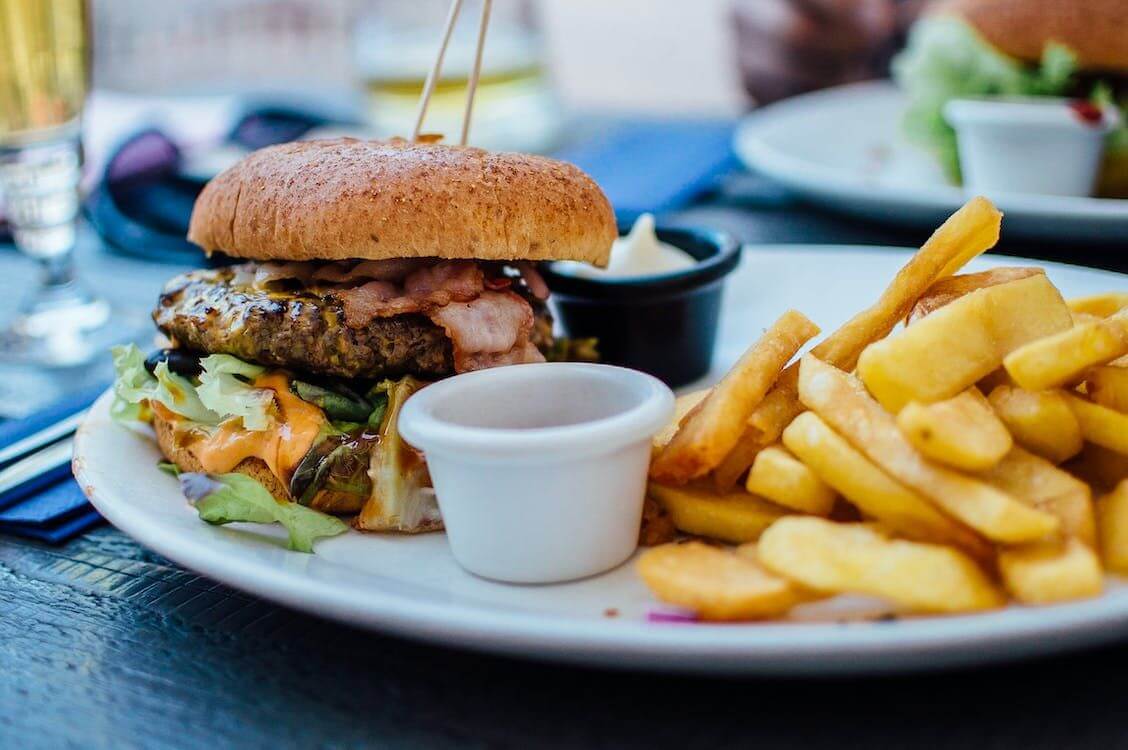Have you ever found yourself ransacking the kitchen for a late-night cheesecake fix or making bizarre food requests like pickles, cheese, peanut butter, and bananas during your partner’s pregnancy cravings? If so, you’re not alone. Food cravings are a universal experience, but what exactly drives these intense desires? While there’s no shortage of theories and old wives’ tales, the truth behind food cravings is a fascinating journey into the complex world of human appetite.
One commonly held belief is that food cravings are our body’s way of signaling nutrient deficiencies. It’s a seemingly logical explanation: our bodies crave specific foods to obtain the nutrients they lack. However, modern scientific research has cast doubt on this notion. Despite the occasional exception, like Pica (where individuals crave non-food items like dirt due to low iron or zinc levels), several studies have failed to establish a direct link between cravings and nutrient deficiencies. So, if your midnight yearnings aren’t for a handful of soil, we need to explore other explanations.
If our cravings aren’t motivated by nutrient shortages, what’s really going on? The prevailing theory suggests that food cravings are the result of a complex interplay of psychological, social, cultural, and environmental factors. To better understand this, let’s dive into some real-world examples that unveil the mystery behind our cravings.
Take chocolate, for instance. It’s no secret that many people, especially American women, can’t resist its allure. In fact, chocolate consistently tops the list of most-craved foods. Surprisingly, Japanese women prefer sushi. However, what’s truly intriguing is that around 50% of women in the United States report heightened chocolate cravings during their menstrual cycles. If these cravings were solely due to nutritional deficiencies, they should subside after menopause or once dietary vitamin intake meets the recommended levels. Yet, they persist.
A 2009 poll reaffirms this fact. So why does chocolate suddenly become irresistible during that time of the month? The answer likely lies in “feel-good” neurotransmitters like serotonin, which the brain releases after consuming sweets and carbohydrates. These neurotransmitters could be the driving force behind these cravings. While it might be challenging for non-menstruating individuals to relate, a small dessert can indeed provide comfort amidst the discomfort of cramps, migraines, and bloating.
The Appetite Orchestra
To unravel the cravings puzzle, it’s essential to grasp how our body regulates hunger. This intricate process involves a network of hormones and neurotransmitters, each playing a unique role. The hypothalamus in the brain, along with the hormone leptin, derived from fat cells and circulating in the bloodstream, largely governs hunger.
Hunger Precursors
Various factors precede the sensation of hunger. For instance, a rise in insulin levels leads to a drop in blood sugar, triggering hunger pangs. Ghrelin, often referred to as the hunger hormone, plays a significant role in stimulating appetite. Other stimulants, such as neuropeptide Y and anandamide, can also spark the desire to snack. Notably, anandamide binds to cannabinoid receptors—the same receptors activated when you consume marijuana.
Leptin’s Satiety Signal
Leptin serves as the primary messenger, signaling fullness and helping us resist overindulgence in tempting treats. Leptin counteracts the effects of neuropeptide Y and anandamide and contributes to the production of alpha-melanocyte-stimulating hormone, another appetite-suppressing hormone. Unsurprisingly, inadequate leptin levels have been linked to severe obesity and excessive eating. Cholecystokinin is yet another hormone that reduces hunger while enhancing the body’s ability to digest proteins and lipids.
Our appetite is subject to various mechanisms, both stimulating and inhibiting hunger. Let’s explore these mechanisms in more detail:
Neurotransmitter Influence
Consuming diverse foods can trigger the release of neurotransmitters associated with positive emotions in the brain. This, in turn, leads to eating behaviors akin to addiction. For example, consuming proteins prompts the production of tyrosine, boosting dopamine, norepinephrine, and epinephrine levels. Dopamine, known as the “reward neurotransmitter,” plays a pivotal role in reward-driven learning.
Carbohydrate Conundrum
When you consume carbohydrates—sugars, bread, pasta—your body responds by increasing insulin production. Elevated insulin levels lead to the removal of specific amino acids from the bloodstream, leaving behind tryptophan. In the brain, tryptophan undergoes conversion into serotonin—a neurotransmitter associated with well-being and happiness. In fact, many antidepressants aim to influence serotonin levels.
The Craving Chronicles
While cravings can affect anyone, pregnant women are often regarded as the ultimate craving connoisseurs. It’s tempting to attribute these cravings to specific nutrient needs during pregnancy. However, the real story lies in hormonal fluctuations rather than nutritional deficiencies. Pregnancy hormones significantly alter the sensitivity of smell and taste, making certain foods and scents more appealing or repulsive. These heightened senses play a pivotal role in developing cravings, even for items that would typically be unappetizing. So, let’s embark on a deeper exploration of the captivating world of cravings and uncover the truths behind our irresistible desires.
Additional Facts
Cravings May Be Influenced by Food Additives
Besides natural nutrients, cravings can also be triggered by food additives. For example, monosodium glutamate (MSG) is often added to processed foods to enhance flavor, and some people may develop cravings for foods containing MSG.
Nutrient Absorption and Cravings
Your body’s ability to absorb certain nutrients can impact cravings. Conditions like celiac disease, which affect nutrient absorption in the gut, can lead to specific food cravings as the body attempts to compensate for deficiencies.
Dehydration and Thirst
Sometimes, what we interpret as food cravings are actually signals of thirst or dehydration. Our bodies may send hunger signals when we are actually in need of fluids. Drinking water can sometimes alleviate these cravings.
Seasonal Cravings
Some people experience seasonal cravings. For example, during the winter months, you might crave hearty, calorie-dense foods, while in the summer, you may crave lighter, hydrating foods. These cravings could be linked to our ancestors’ need for seasonal energy preservation.
Cravings and Stress
Stress can significantly impact cravings. It’s not uncommon for people to crave comfort foods high in sugar, fat, and salt during stressful times. This may be linked to the release of stress hormones like cortisol.
Cultural Influence on Cravings
Cultural background and upbringing can shape our food preferences and cravings. Someone raised in a culture with a particular cuisine may have lifelong cravings for those specific foods, even if they move to a different region.
The Role of Gut Microbiota
Emerging research suggests that the trillions of microorganisms in our gut, known as gut microbiota, may influence our food cravings. These microbes play a role in digestion and can release signaling molecules that affect our appetite.
Cravings During and After Exercise
Intense physical activity can lead to cravings for specific nutrients. After a strenuous workout, your body may crave carbohydrates to replenish glycogen stores, or protein to aid in muscle recovery.
Cravings and Medications
Certain medications can trigger food cravings as a side effect. For example, some antidepressants and antipsychotic medications may lead to increased cravings for sugary foods.
Cravings and Evolution
Evolutionary factors may contribute to cravings. Our ancestors needed to seek out specific foods to meet their nutritional needs, and these cravings may have been advantageous for survival. However, modern lifestyles and easy access to a variety of foods can sometimes lead to misaligned cravings.
In our quest to decipher the enigma of cravings, we’ve peeled back the layers of scientific research and delved into the intricate mechanisms governing our appetite. While the precise causes of specific cravings remain shrouded in mystery, one thing is clear: our desire for particular foods is influenced by a web of factors far more intricate than mere nutrient deficiencies. So, the next time you’re struck by a craving, savor the complexity of your appetite—there’s more to it than meets the taste buds.

How to Keep Tabs on Your Water Intake Monitoring your body weight is a good…

🔥 Hot off the press: The Game-Changing Weight Loss Course is HERE! 🔥 Originally priced…

Because your active life may hinder your ability to receive appropriate nutrients, which can lead…

Unleash Your Best Self with the Ultimate Fitness & Nutrition Formula! If you’re tired of…



